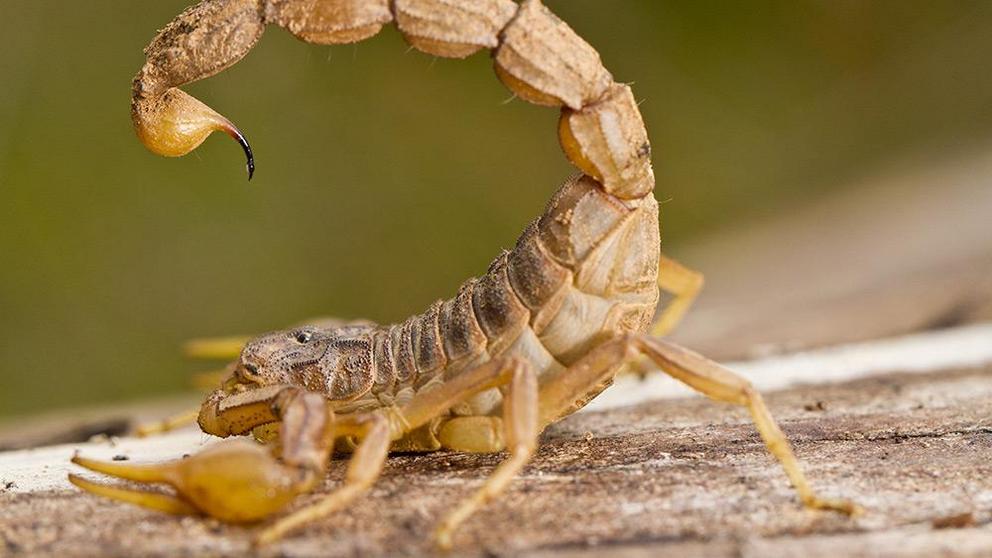From poison to cure: researchers synthesize scorpion venom compounds to fight ‘highly infectious bacteria’
Scorpion venom might hold the key to eliminating some strains of highly infectious bacteria, a recent study shows.
According to a paper published in the journal Proceedings of the National Academy of Sciences, scientists from Stanford University and the National Autonomous University of Mexico (UNAM) discovered that two compounds from the venom of an Eastern Mexican scorpion, Diplocentrus melici, can fight off harmful bacteria without harming healthy tissue.
Richard Zare, a chemistry professor at Stanford and Lourival Possani, a biochemistry professor at UNAM, said their teams made the intriguing discovery after capturing a few specimens of D. melici.
The teams collaborated in identifying the key compounds that made D. melici venom an important pharmacological lead, resulting in the discovery of two previously unknown alkaloid compounds from the venom, known as benzoquinones.
According to the researchers, after extracting the venom from the scorpions via electric stimulation, they saw it change in color as soon as it was exposed to air. They were eventually able to trace this change to two then-undiscovered benzoquinones: one that turned red upon exposure to air and the other, to blue.
Shibdas Banerjee, one of the study authors responsible for unraveling the structure of the newly discovered chemicals, said that while the two compounds are structurally related, the red one has an oxygen atom on one of its branches, compared to the blue one, which has a sulfur atom.
Noting the antimicrobial properties of known quinone compounds, the researchers from Zare’s laboratory sent samples of the two newly discovered compounds to pathologist Rogelio Hernández-Pando and his colleagues at the Salvador Zubirán National Institute of Health Sciences and Nutrition, in Mexico City, for further testing.
According to the study, Hernández-Pando’s team found that red 1,4-benzoquinone effectively destroyed the highly infectious Staphylococcus aureus, which previous studies have linked to skin infections, while blue 1,4-benzoquinone was able to kill different strains of Mycobacterium tuberculosis — including antibiotic-resistant ones.
Potential cure for tuberculosis?
Tuberculosis ranks among the world’s top causes of death, infecting 10 million and killing 1.5 million people in 2018, according to the World Health Organization (WHO).
This development led to another question for the researchers: “We found that these compounds killed bacteria, but then the question became, ‘Will it kill you, too?'”
The answer, according to Zare, is no.
“Hernández-Pando’s group showed that the blue compound kills tuberculosis bacteria but leaves the lining of the lungs in mice intact,” Zare said, noting that this property might make the compound an important drug in the fight against tuberculosis.
According to Possani, whose research revolves around discovering new medical treatments based on scorpion venom, the discoveries regarding the compounds’ medicinal potential may not have become possible if it were not for Zare’s team, noting the latter’s successful synthesis of the compounds in response to the extremely low amount of venom they extracted from the arachnids.
“We only had 0.5 microliters of the venom to work with. This is 10 times less than the amount of blood a mosquito will suck in a single serving,” Zare, who specializes in detecting chemical reactions at the molecular level, said, noting that this low yield makes scorpion venom one of the most precious materials in the world.
“It would cost $39 million to produce a gallon of it,” Zare added.
According to the researchers, while the initial results of their study produced satisfactory results, they still plan to continue their collaboration in order to find out how to use D. melici venom for good, as well as learn why the two relatively non-toxic compounds are present in the venom in the first place.
“These compounds might not be the poisonous component of the venom,” Zare said. “We have no idea why the scorpion makes these compounds. There are more mysteries.”
For full references please use source link below.

